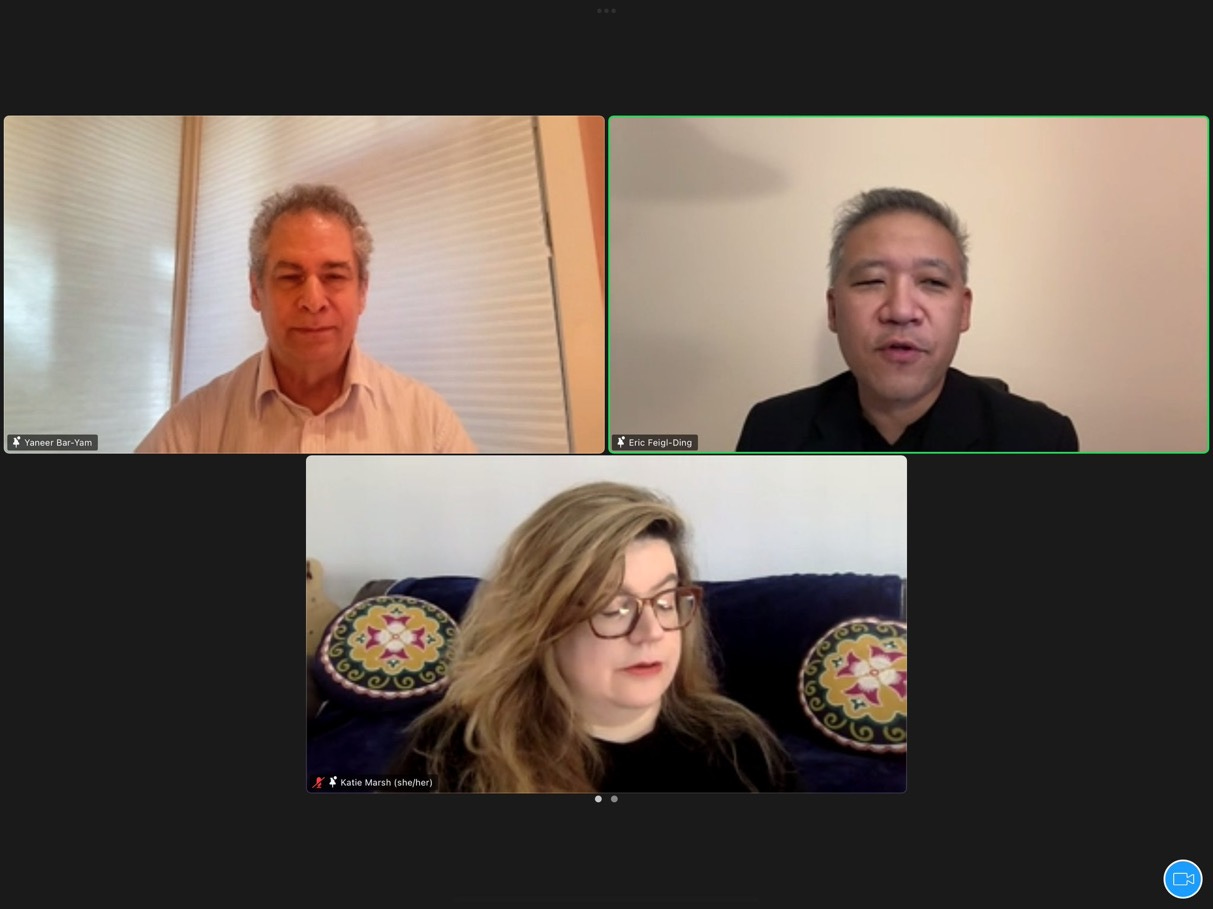Long COVID Risks Increase with Repeated Infections, Experts Warn During WHN Event
Eric Feigl-Ding, Yaneer Bar Yam, Katie Marsh
On Friday, October 18, 2024, during a Zoom event organized by the World Health Network (WHN), public health experts Eric Feigl-Ding and Yaneer Bar-Yam warned of the ongoing dangers of long COVID, emphasizing its invisibility and cumulative nature. Both speakers highlighted the challenges of addressing a condition that, while pervasive, lacks a dramatic, single defining event to capture public attention.
Long COVID: More Than Just a Mild Aftermath
Eric outlined the significant risks associated with repeated COVID-19 infections, emphasizing that even mild or asymptomatic cases can lead to long COVID. Drawing from recent studies, he explained that each subsequent infection increases both the likelihood and severity of long COVID symptoms, which can range from memory loss and fatigue to cardiovascular complications. Data from a U.S. veterans study and a large Chinese cohort found that the effects of long COVID can persist for at least three years post-infection, often worsening with each additional infection.
“It’s a stacking effect,” Eric noted, explaining that the risk isn’t just limited to the number of infections but also the increasing severity of symptoms over time. Memory decline and brain fog are among the most persistent issues, often more debilitating than a cough or fatigue. He pointed out that this reality is often overlooked, as long COVID unfolds gradually, making it less visible to the general public and policymakers.
The Out-of-Sight, Out-of-Mind Issue
Yaneer expanded on Eric’s points, focusing on why long COVID remains underrecognized despite its serious, long-term consequences. He described it as a “boiling frog” scenario: the slow accumulation of symptoms prevents it from being perceived as an urgent crisis, unlike sudden events that demand immediate attention. Without a clear, dramatic trigger, long COVID has struggled to command the kind of public and governmental response necessary to curb its spread and impact.
The lack of clear diagnostic criteria compounds the problem. Yaneer emphasized that diagnosing long COVID often involves ruling out other conditions, making it a lengthy and uncertain process. This ambiguity feeds skepticism and undermines efforts to frame long COVID as a pressing public health crisis. “If people can’t see it, they won’t react to it,” Yaneer said. “The insidious nature of long COVID makes it easy to ignore, but the damage is very real.”
Personal Impact and Public Perception
Both experts agreed that the growing prevalence of long COVID means more people are becoming familiar with it, either through personal experience or through someone they know. During a Senate Health, Education, Labor, and Pensions (HELP) Committee hearing last year, several senators admitted to having personal or close connections with long COVID, underscoring how widespread it has become, even among decision-makers.
However, Eric noted that personal familiarity alone is insufficient to drive policy changes. “We need to make the invisible visible,” he said, stressing the importance of communication campaigns that use personal stories and testimonials to convey the serious impact of long COVID. Efforts in Victoria, Australia, and Canada, which have featured videos of individuals describing their experiences, were cited as examples of how to build empathy and awareness.
A Call for Stronger Action
Both Eric and Yaneer called for more comprehensive measures to prevent long COVID, including increased vaccination, masking, and ventilation. Yaneer pointed to modeling studies showing that even modest increases in these measures could significantly slow the spread of COVID-19, thereby reducing the risk of long COVID.
“The lack of urgency in addressing long COVID is not just a healthcare failure but a policy failure,” Yaneer said. He highlighted the need for a more systematic public health response, emphasizing that while personal narratives can raise awareness, the ultimate solution lies in better prevention, diagnosis, and treatment measures.
The discussion at the WHN event underscored the need for a paradigm shift in how long COVID is perceived and addressed. Without clearer diagnostic tools, better communication strategies, and stronger public health measures, the condition will continue to be underestimated—out of sight and out of mind. Both Eric and Yaneer stressed that the longer long COVID remains neglected, the more entrenched it will become, posing ongoing challenges to individuals, healthcare systems, and society at large.
As Eric concluded, “Long COVID may not have a defining event, but it is a defining crisis. It’s time we start treating it as one.”


